National Monuments
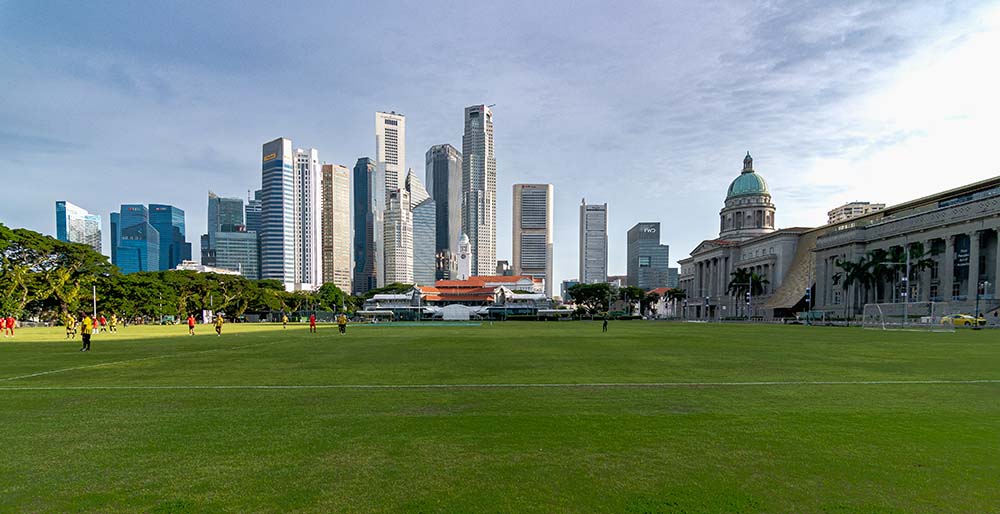
The Padang
The Padang (‘field’ in Malay) is one of the oldest open spaces in Singapore and part of the area reserved for government use after the establishment of the British settlement in 1819.
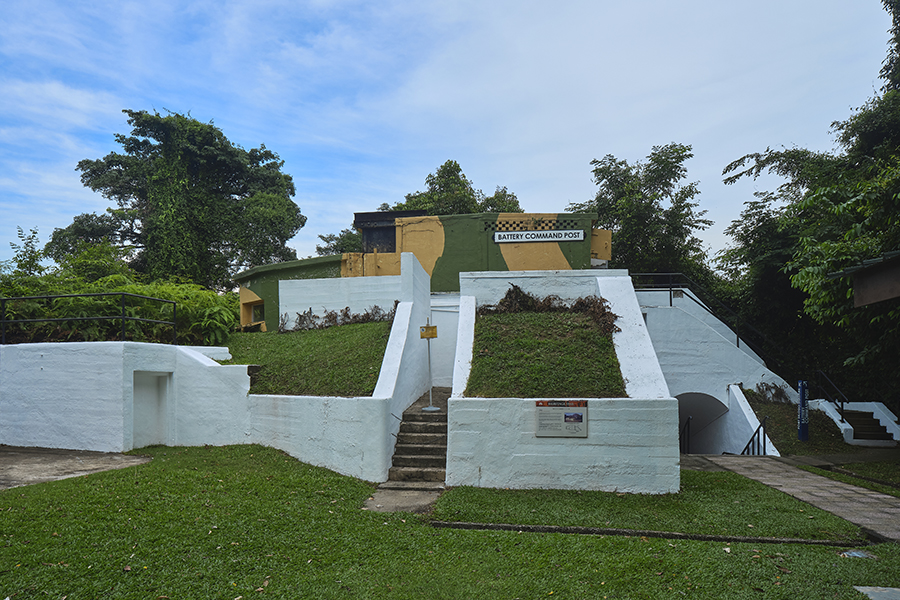
Fort Siloso
Located on the western tip of Pulau Blakang Mati (known today as Sentosa Island), Fort Siloso was one of the many coastal fortifications built around the 19th century by the British and remains the most intact fortification in Singapore. The Fort was built on Mount Siloso, where the name “Siloso” is said to be derived from a Malayan word meaning “rock”, a possible reference to the rock outcrops that once stood at the western entrance to the present-day Keppel Harbour.

Former Thong Chai Medical Institution
Home to the first free traditional Chinese medical clinic for the poor in Singapore, the Former Thong Chai Medical Institution testifies to the Chinese pioneers’ spirit of mutual assistance and their generosity towards the poor and needy.
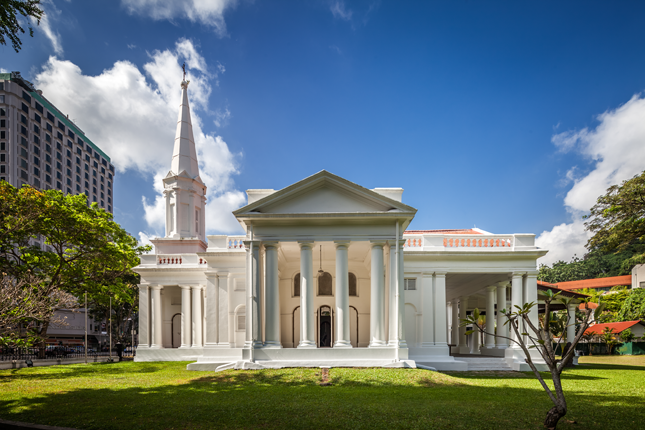
Armenian Apostolic Church of Saint Gregory the Illuminator
Singapore's oldest Christian church was the spiritual home of the small but influential Armenian community living here during the colonial period and continues to serve as a reminder of their contributions to the development of Singapore over the years.
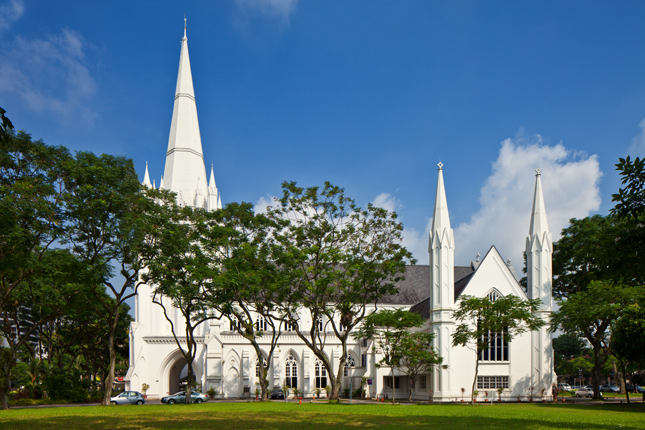
Saint Andrew's Cathedral
Saint Andrew's Cathedral is Singapore’s oldest surviving Anglican place of worship and is the seat of the Anglican bishop of Singapore. The magnificent edifice has stood the test of time, bearing witness to the spread of Anglicanism in the region. It also testifies to the contributions of the local Scottish, English, and Indian communities to the growth and development of colonial Singapore.
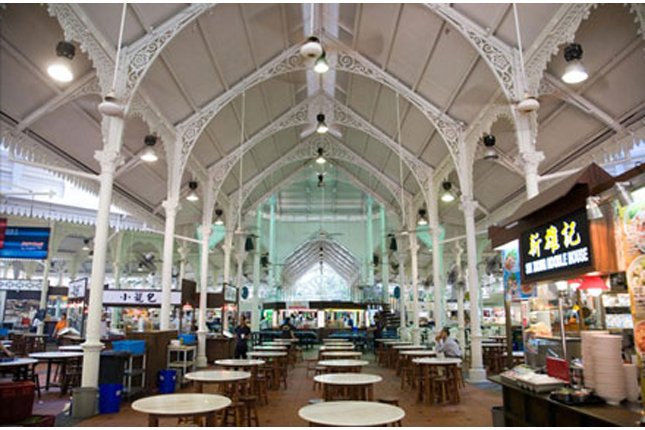
Former Telok Ayer Market (now known as Lau Pa Sat)
Affectionately known as Lau Pa Sat (老巴刹, ‘Old Market’) by generations of Singaporeans, the Former Telok Ayer Market was one of Singapore’s oldest markets. The iconic structure is the only survivor of the five markets that used to serve residents living in Singapore’s town area.
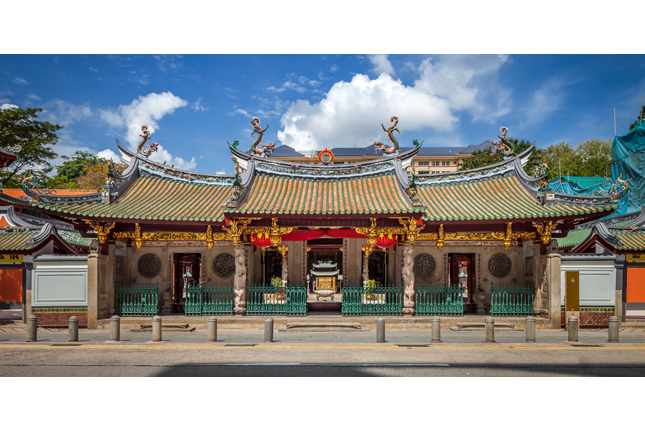
Thian Hock Keng
Thian Hock Keng (天福宫, ‘Palace of Heavenly Happiness’) is one of Singapore’s oldest Hokkien temples. It is located near Al-Abrar Mosque, Former Nagore Dargah, and Telok Ayer Chinese Methodist Church, standing on what used to be the shoreline of Telok Ayer Basin.

Sri Mariamman Temple
Together with Jamae Mosque, Sri Mariamman Temple – Singapore’s oldest Hindu temple – is an enduring icon on South Bridge Road which is a part of Chinatown. Both monuments testify to the significant Tamil population that once lived in the vicinity, and are constant reminders of their contributions to Singapore’s development as a British colony.
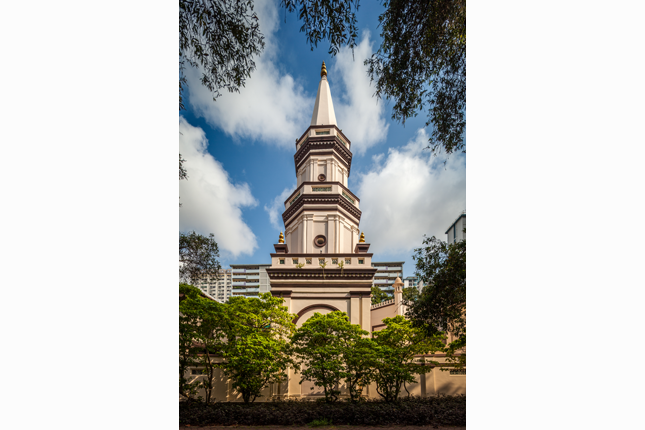
Hajjah Fatimah Mosque
Hajjah Fatimah Mosque is one of the oldest mosques in Singapore, a rare example of one named after a woman. Its unique eclectic architecture stands out from other mosques in Singapore, especially with its distinctively European-style minaret, which tilts slightly. The mosque bears testimony to the once thriving Muslim communities living in the vicinity who made significant contributions particularly to colonial Singapore’s economy.
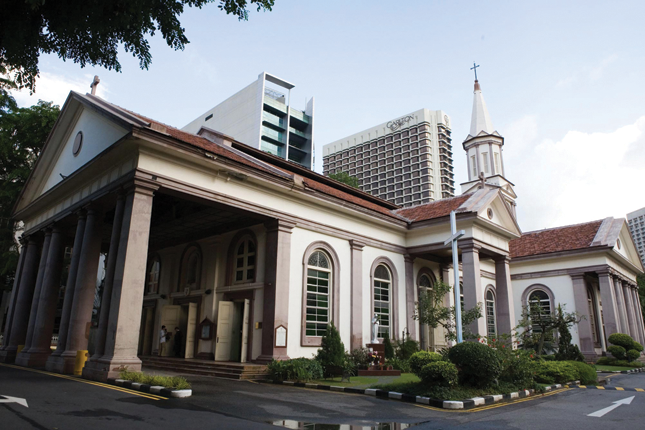
Cathedral of the Good Shepherd
The Cathedral of the Good Shepherd is Singapore's oldest Catholic place of worship and the seat of the local Roman Catholic archbishop. Not only does it bear testimony to the spread of Catholicism in the region, the edifice also serves as a reminder to the contributions of early Catholic missionaries to the fields of religion, architecture, and education in Singapore.
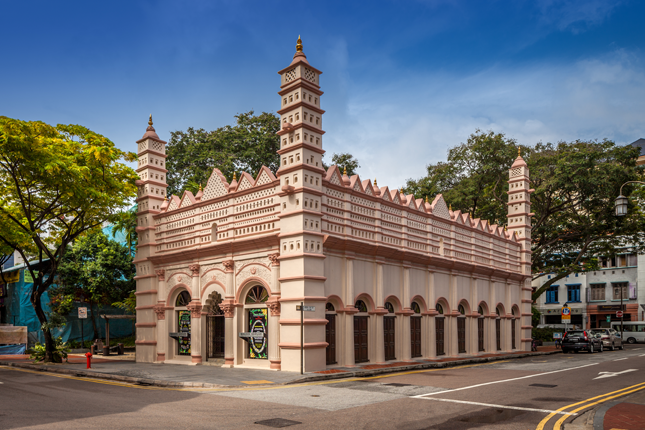
Former Nagore Dargah
Erected by the Chulia community, this magnificent building testifies to their presence in Chinatown in the past and also to their contributions to early colonial Singapore's economy.
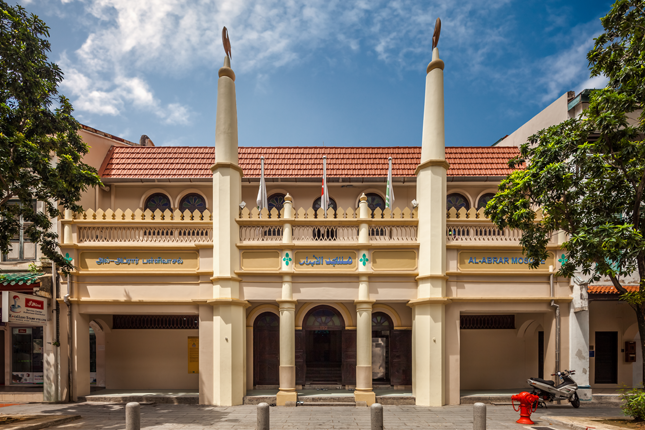
Al-Abrar Mosque
Located on Telok Ayer Street, Al-Abrar Mosque is one of Singapore’s oldest mosques. Also known as Chulia Mosque, the mosque serves as a constant reminder of the Chulia immigrants who once lived in the area and played a vital role in developing the budding economy of early colonial Singapore.
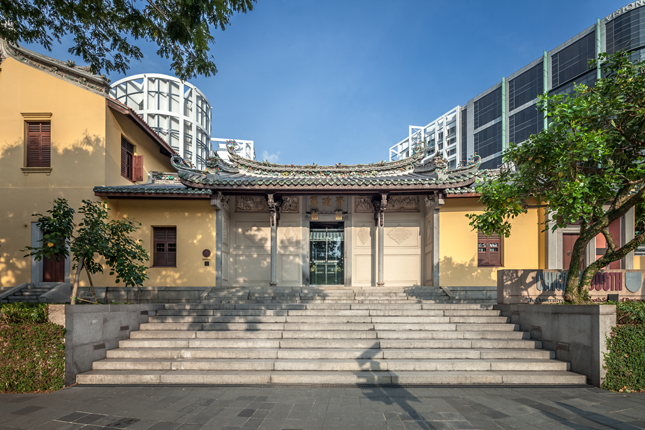
House of Tan Yeok Nee
The Chinese-style Former House of Tan Yeok Nee is the sole survivor of the ‘Four Grand Mansions’ that were built by Teochew towkays (businessmen) in late nineteenth-century Singapore. The former residence is a monument to the contributions of early Chinese immigrants, as well as the various groups of occupants who were committed to the welfare of people resident in Singapore.
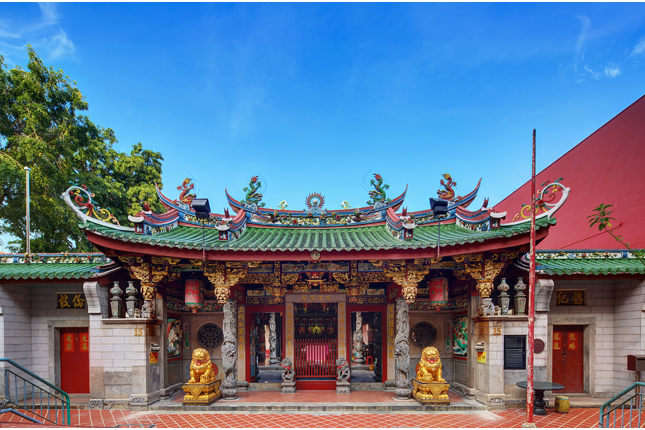
Tan Si Chong Su
The history of Tan Si Chong Su (陈氏宗祠, ‘Ancestral Hall of the Tan Clan’) is inextricably linked to the influx of Chinese immigrants into Singapore during the late nineteenth century. It testifies to the contributions of the Chinese community to colonial Singapore’s growth and development.
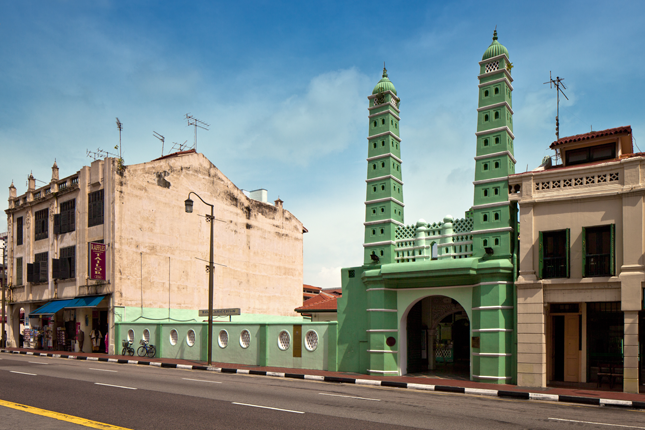
Jamae Mosque
Jamae Mosque is one of the oldest mosques in Singapore and serves as a reminder of the considerably large population of Chulia immigrants who had settled in the Chinatown district and their crucial role in the development of colonial Singapore’s fledgling economy.
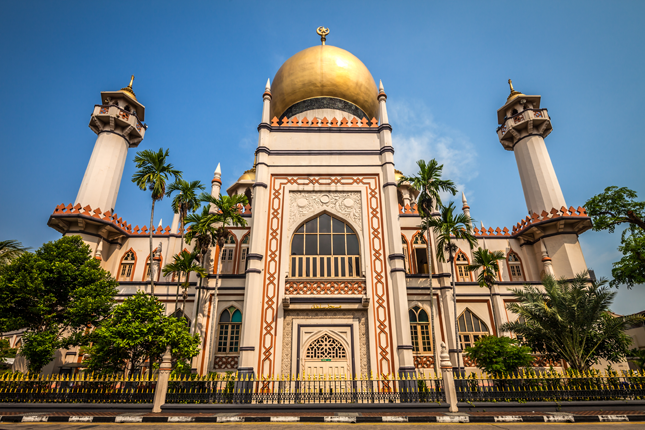
Sultan Mosque
Formerly the royal mosque of the Sultan of Johor, Sultan Mosque represents the solidarity and unity of Muslims in Singapore. The impressive building serves as a reminder of the Malay royalty that was once housed in the nearby Istana Kampong Glam and the thriving Muslim communities living in the area during the British colonial period.

Saint George's Church
Founded as a garrison church, this church bears witness to the area’s history during the colonial period as Tanglin Barracks, which was the General Headquarters of the British Far East Land Forces.
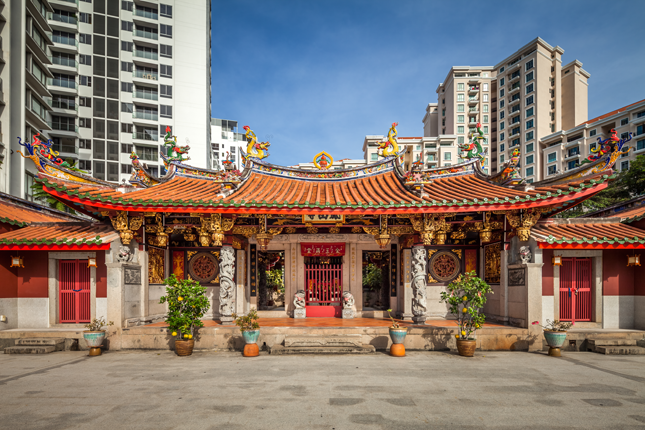
Hong San See
Hong San See was established by Hokkien immigrants from Nan’an County in Fujian Province, China. It exemplifies the spirit of solidarity and organisation of the early Hokkien community in Singapore and bears testimony to their contributions.
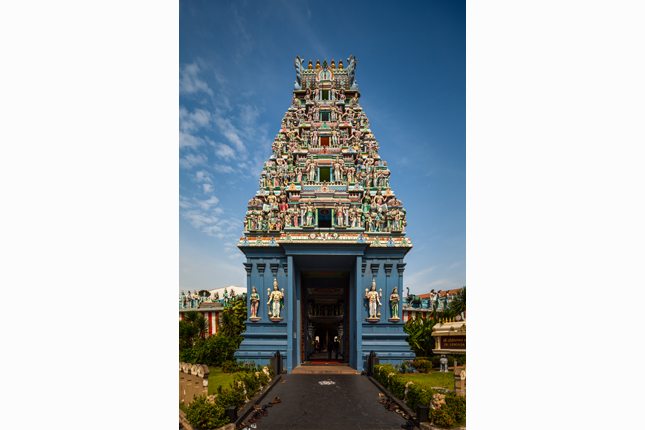
Sri Srinivasa Perumal Temple
Formerly known as Sri Narasimha Perumal Temple, Sri Srinivasa Perumal Temple is the first Hindu temple in Singapore dedicated to Sri Perumal, the Hindu deity more commonly known as Vishnu. Even though the impressive structure standing today was built in the 1960s, the temple is one of Singapore’s oldest Hindu temples in terms of establishment.
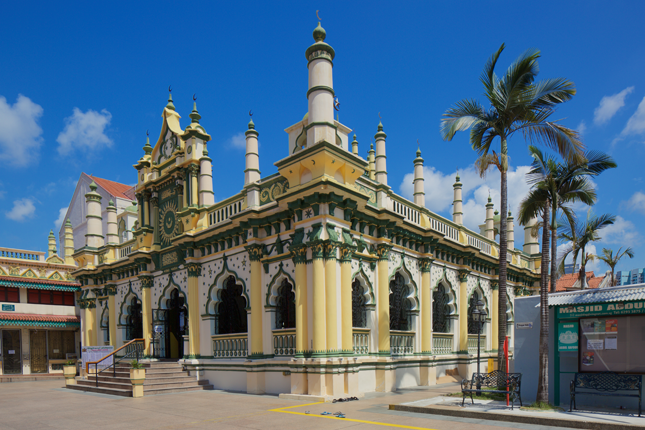
Abdul Gafoor Mosque
Abdul Gafoor Mosque's charming architecture stands out amidst the surrounding shophouses in the historic Little India district. The living monument testifies to the contributions of Tamil and Baweanese pioneers in the development of colonial Singapore.
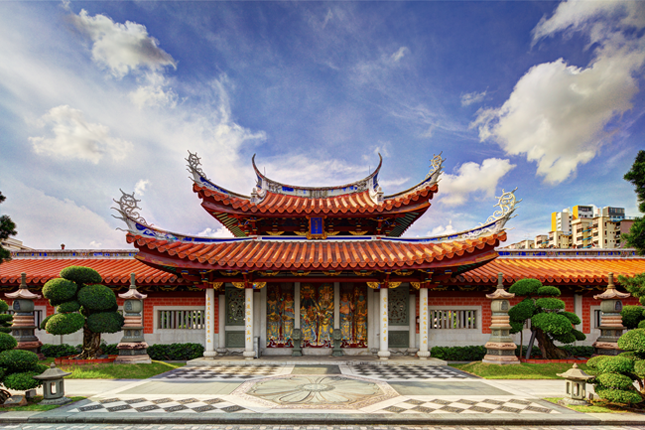
Former Siong Lim Temple (now Lian Shan Shuang Lin Monastery)
The traditional architecture of Lian Shan Shuang Lin Monastery stands out amidst the modern high-rise apartment blocks in the Toa Payoh neighbourhood. The monastery complex houses one of Singapore’s oldest Buddhist temples and testifies to the spread of Mahayana Buddhism in the region.
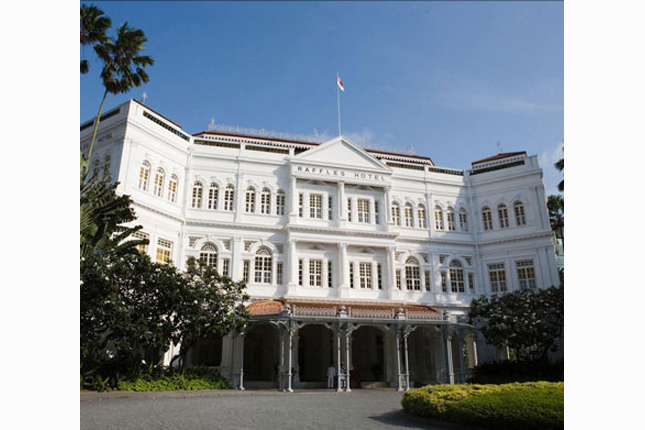
Raffles Hotel
Raffles Hotel is one of the most well-known luxury hotels in Singapore and the oldest surviving establishment of its kind on the island. It is a living witness to the boom in tourism in the late nineteenth- and early twentieth-centuries, and also testifies to the contributions of Singapore’s small but significant Armenian community during the early years of British Singapore.
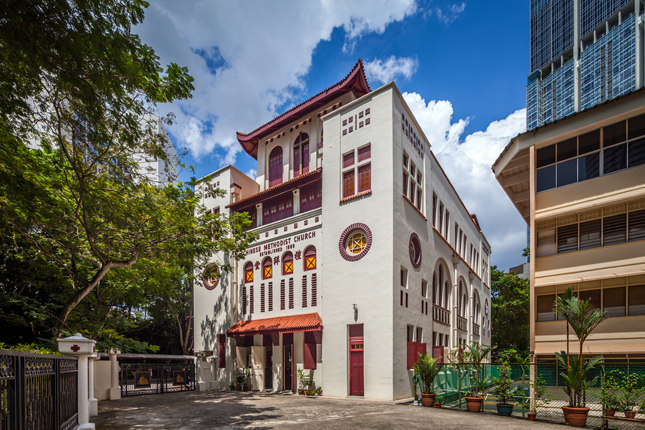
Telok Ayer Chinese Methodist Church
Originally known as the Chinese Methodist Church, Telok Ayer Chinese Methodist Church was the first church established to cater exclusively to the spiritual needs of the Chinese Methodist community in Singapore. It bears testimony to the growth and development of the local Methodist Church and also serves as a reminder of the contributions of early Christian missionaries in Singapore.
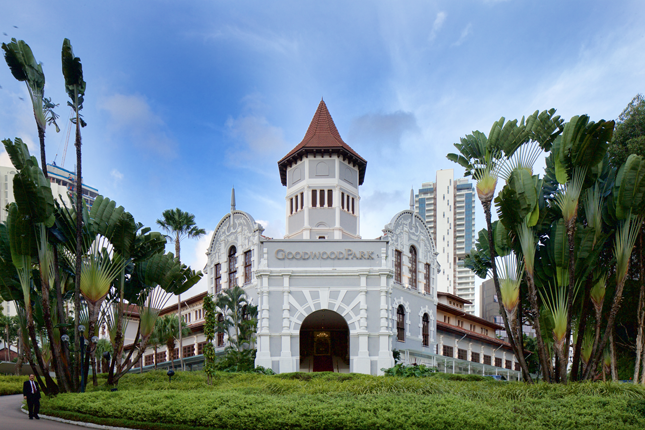
Goodwood Park Hotel (Tower Block)
The Tower Wing of the present-day Goodwood Park Hotel was home to the German Teutonia Club, one of the earliest European national clubs in Singapore. It is a prominent landmark in the Orchard area for its unique architecture. The charming structure serves as a reminder of the Germans’ contributions to trade in early colonial Singapore, and of the impact of the First World War on the local German community.
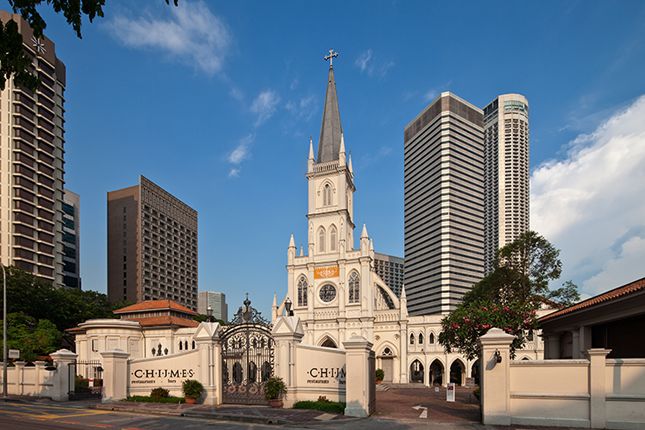
Former Convent of the Holy Infant Jesus Chapel and Caldwell House (now CHIJMES)
Affectionately referred to as the Town Convent in the past, this building once housed the oldest Catholic girls’ school in Singapore, founded by the French sisters of the Congregation of the Holy Infant Jesus in 1854.
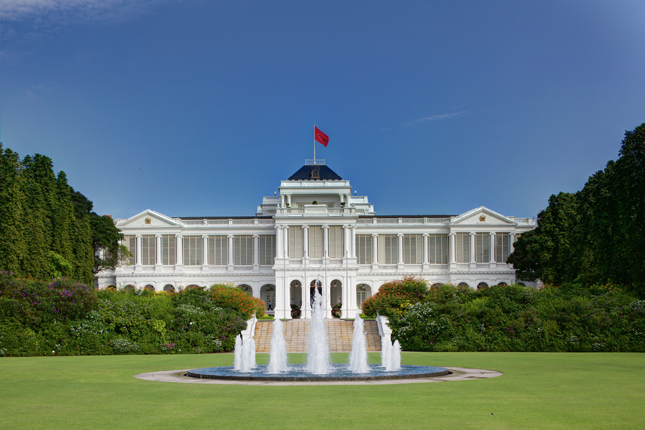
The Istana and Sri Temasek
The Istana is the official residence of the President of the Republic of Singapore. On its well-manicured grounds stand the Main Building (commonly called the Istana), Sri Temasek, Istana Villa, and The Lodge. The former two buildings are particularly significant: not only have they been graced by numerous local and foreign dignitaries through the years, they have also witnessed milestones and important events in Singapore’s history. Together, they represent the sovereignty of Singapore as an independent state.
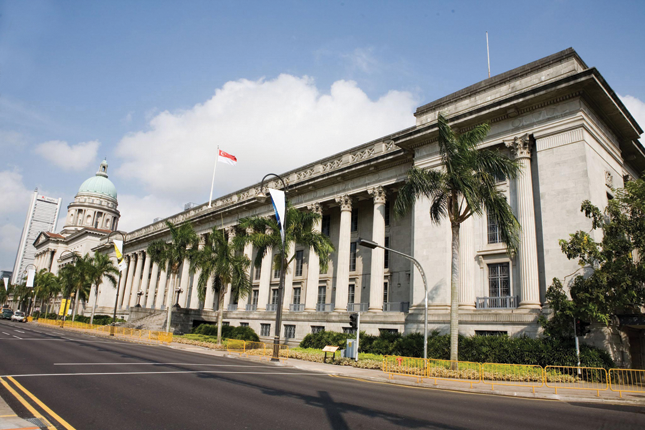
Former City Hall
Located in the heart of the Civic District, the Former City Hall served as an important government office in Singapore. The impressive building bears witness to Singapore’s colonial past and the Japanese Occupation (1942–1945), as well as to several milestones on its road to independence.
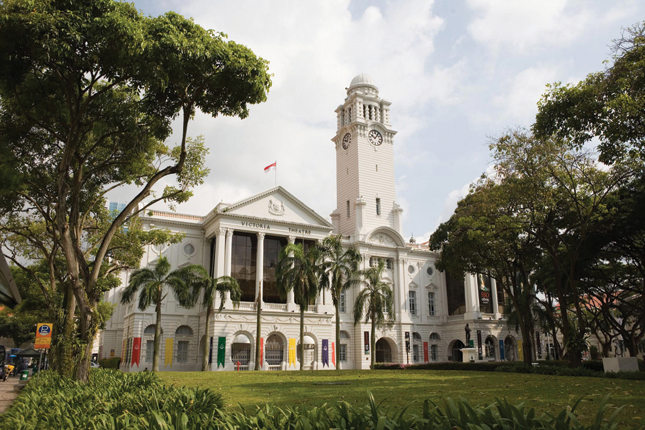
Victoria Theatre and Victoria Concert Hall
In the heart of Singapore’s historic Civic District stand the magnificent Victoria Theatre and Victoria Concert Hall with the iconic clock tower. As two of Singapore’s oldest existing purpose-built performance venues, the twin buildings are often remembered as favourite locations for theatrical productions and concerts.
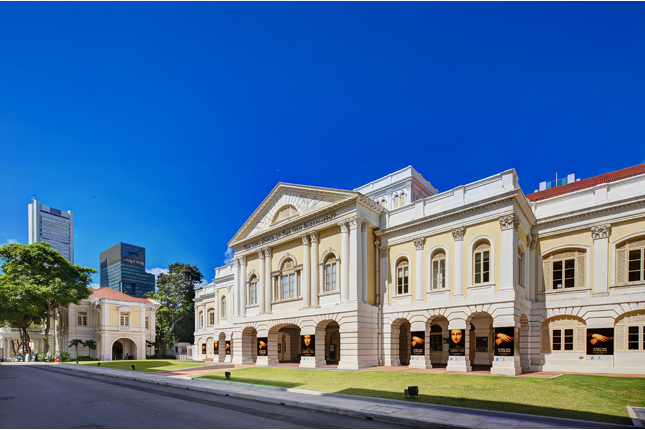
Former Parliament House and Annex Building (now The Arts House)
The Former Parliament House is likely to be the oldest surviving building in Singapore. It bears testimony to Singapore’s colonial history and played an important political function in the country’s post-independence years.
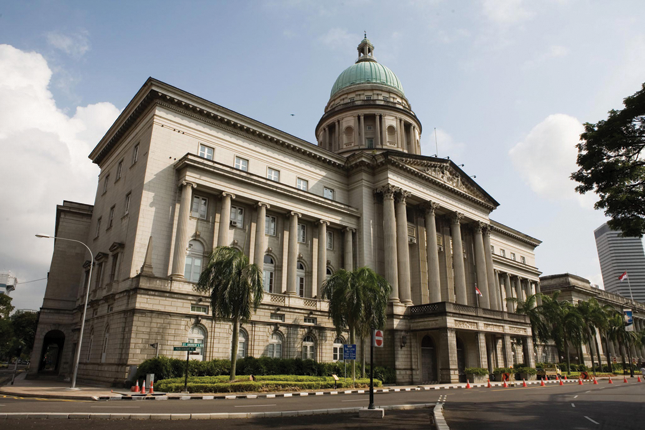
Former Supreme Court
Amidst the colonial buildings and skyscrapers of the Civic District rises the copper-green dome of the Former Supreme Court. Once housing the highest court in Singapore, the Former Supreme Court is situated next to the Former City Hall in front of the Padang. It is also the last grand Neoclassical building constructed during Singapore’s colonial era.
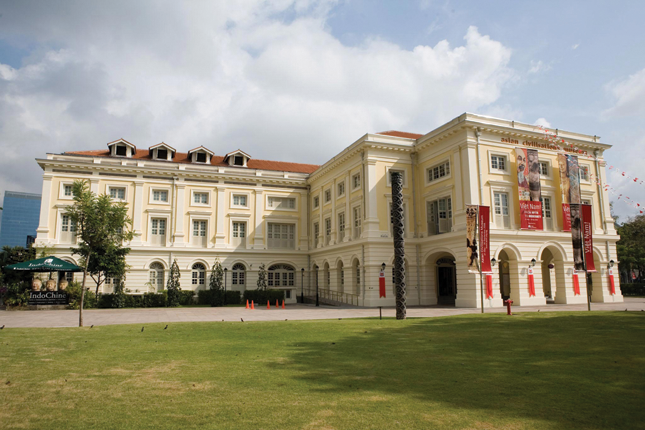
Former Empress Place Building (now Asian Civilisations Museum)
Situated at the mouth of the Singapore River, the Former Empress Place Building was an important government building in Singapore up to the 1980s. Constructed by Indian convicts, the building once housed key administrative departments.
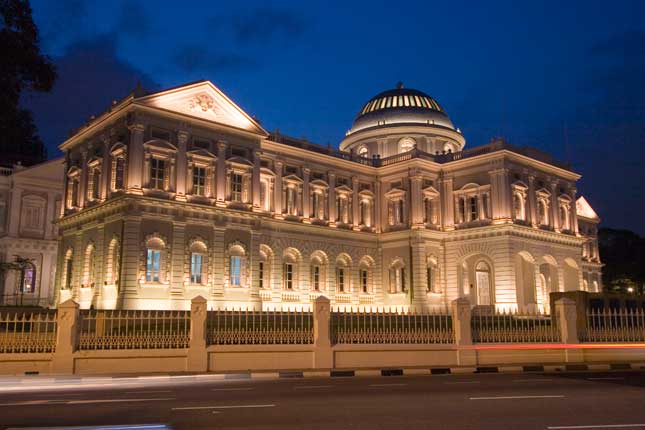
National Museum of Singapore
With its wide façade and large dome, the National Museum of Singapore has been a prominent landmark on Stamford Road for over a century. It is Singapore’s oldest existing museum, devoted to the general history of Singapore. The grand edifice is a testament to Singapore’s role as a centre of academic research in the region since the nineteenth century.
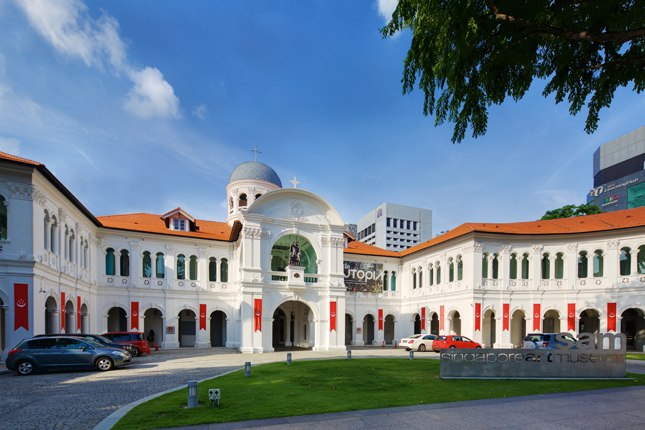
Former Saint Joseph's Institution (now Singapore Art Museum)
Saint Joseph's Institution is the oldest Catholic boys’ school in Singapore and was founded by the Christian Brothers (formally known as the Institute of the Brothers of the Christian Schools).
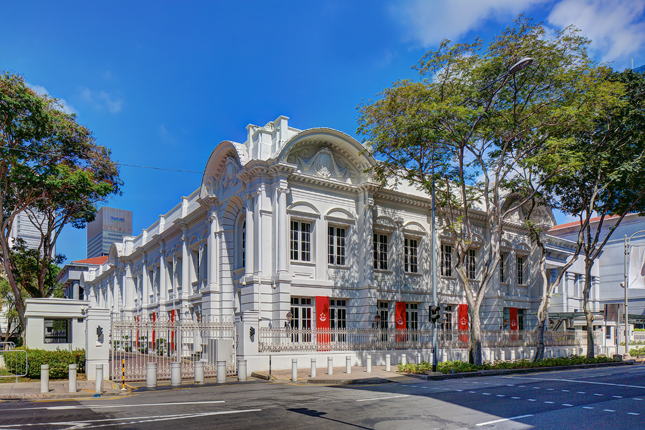
Former Attorney-General's Chambers (now Parliament House Block C)
Tucked away in a corner near the Padang is a beautiful structure that once housed the Attorney-General’s Chambers. Today, the building forms part of the Parliament House complex.
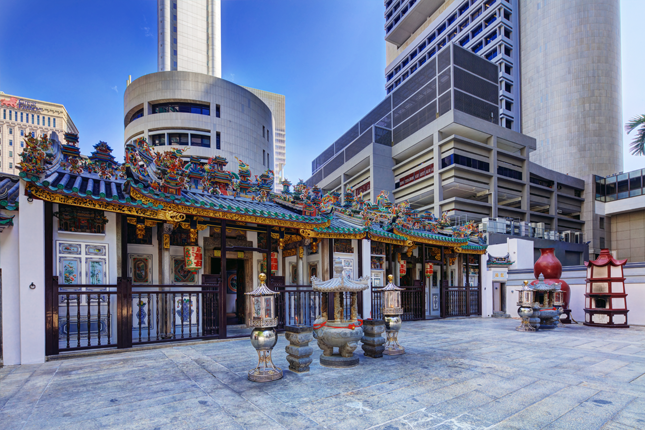
Yueh Hai Ching Temple
Also known as Wak Hai Cheng Bio in Teochew, the temple serves as a reminder of the contributions of Teochew Chinese pioneers who arrived in Singapore shortly after the arrival of the British in 1819.
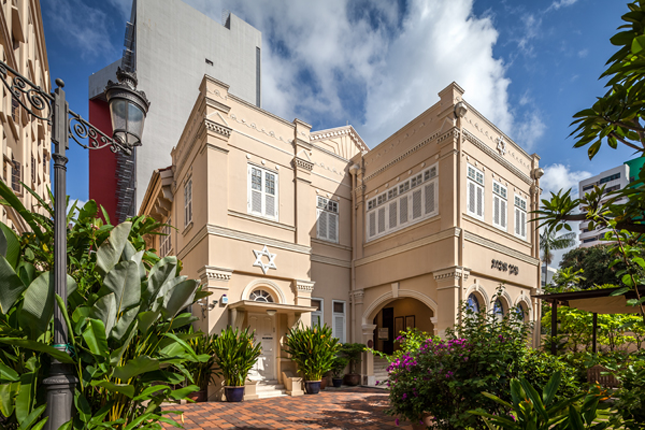
Maghain Aboth Synagogue
Located in the former Jewish neighbourhood, Maghain Aboth Synagogue is the oldest surviving synagogue in Southeast Asia. It is a living monument that bears witness to the contributions of the small but close-knit Jewish community in Singapore since the British colonial period.
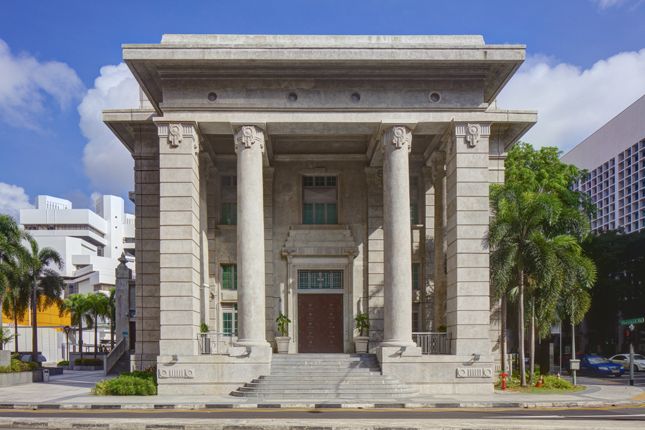
Former Ministry of Labour Building (now Family Justice Courts)
The edifice bears witness to Singapore’s judiciary system today and also calls to mind the period of the influx of Chinese immigrants in the colonial era and their contributions to Singapore.
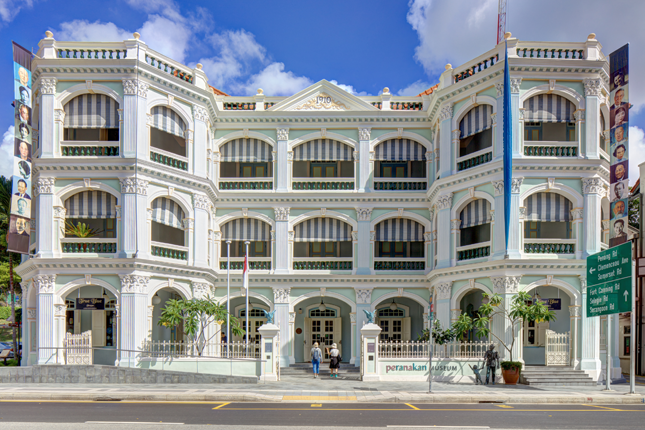
Former Tao Nan School (now The Peranakan Museum)
This was the first modern Chinese school in Singapore and one of the earliest of its kind in the Straits Settlements. The beautiful three-storey building is a testimony to the local Chinese community’s commitment to education and the modernisation of Chinese education in twentieth-century Singapore.
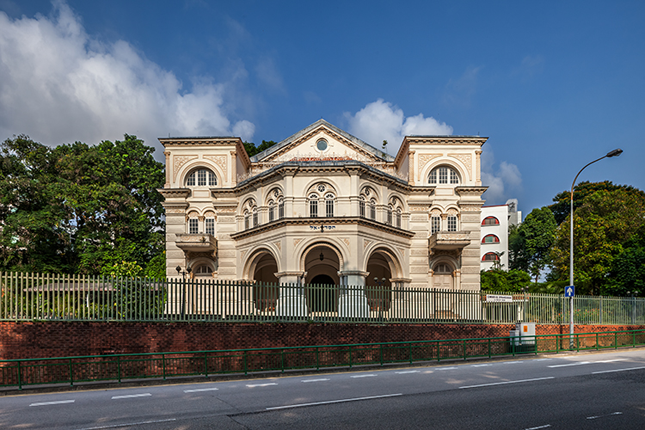
Chesed-El Synagogue
Chesed-El Synagogue bears witness to the Singapore Jewish community’s contributions to Singapore’s development since the British colonial period and is also a memorial to the prominent philanthropist Sir Manasseh Meyer.
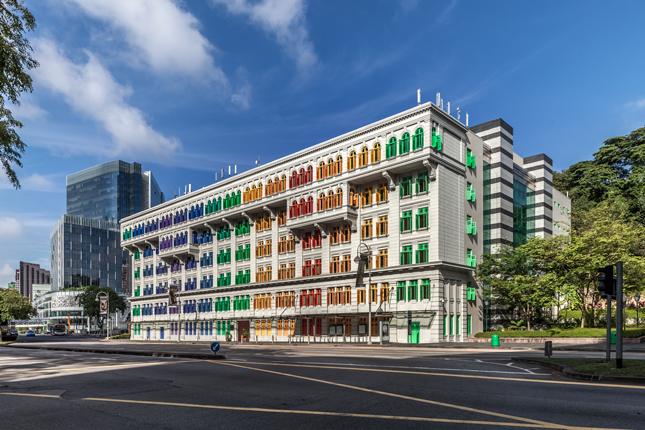
Former Hill Street Police Station
Nicknamed the ‘Police Skyscraper’ in the past, the Former Hill Street Police Station is prominently located at the junction of Hill Street and River Valley Road. The building served as a police station and also housed accommodation for officers and their families. A monument to the police force in Singapore, the edifice was once the largest of its kind in Malaya.
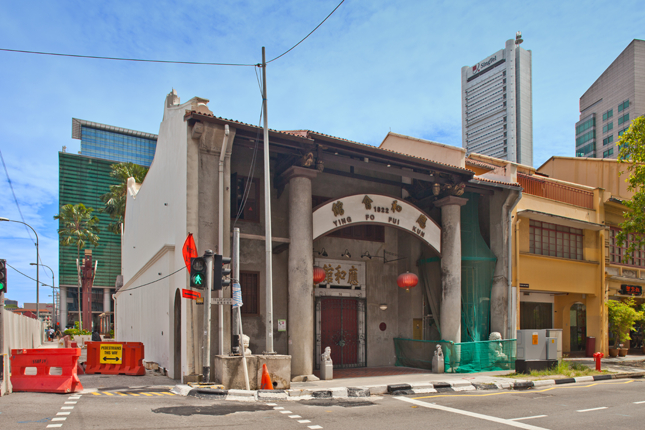
Ying Fo Fui Kun
Ying Fo Fui Kun exemplifies the spirit of solidarity within the early Hakka community and serves as a reminder of their contributions to Singapore’s development over the years.
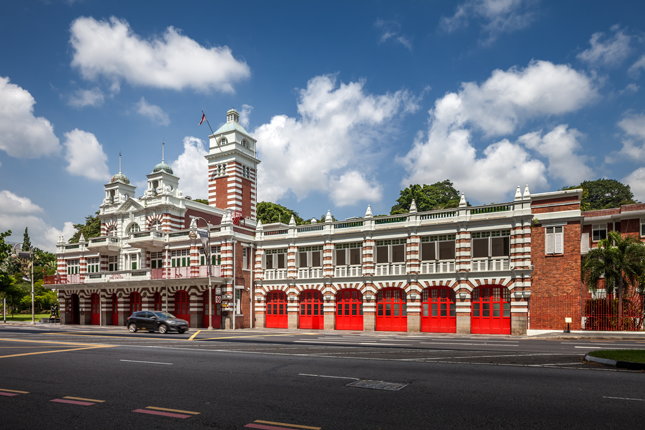
Central Fire Station
The Central Fire Station is the oldest surviving fire station in Singapore and is a living monument to the local firefighting force.
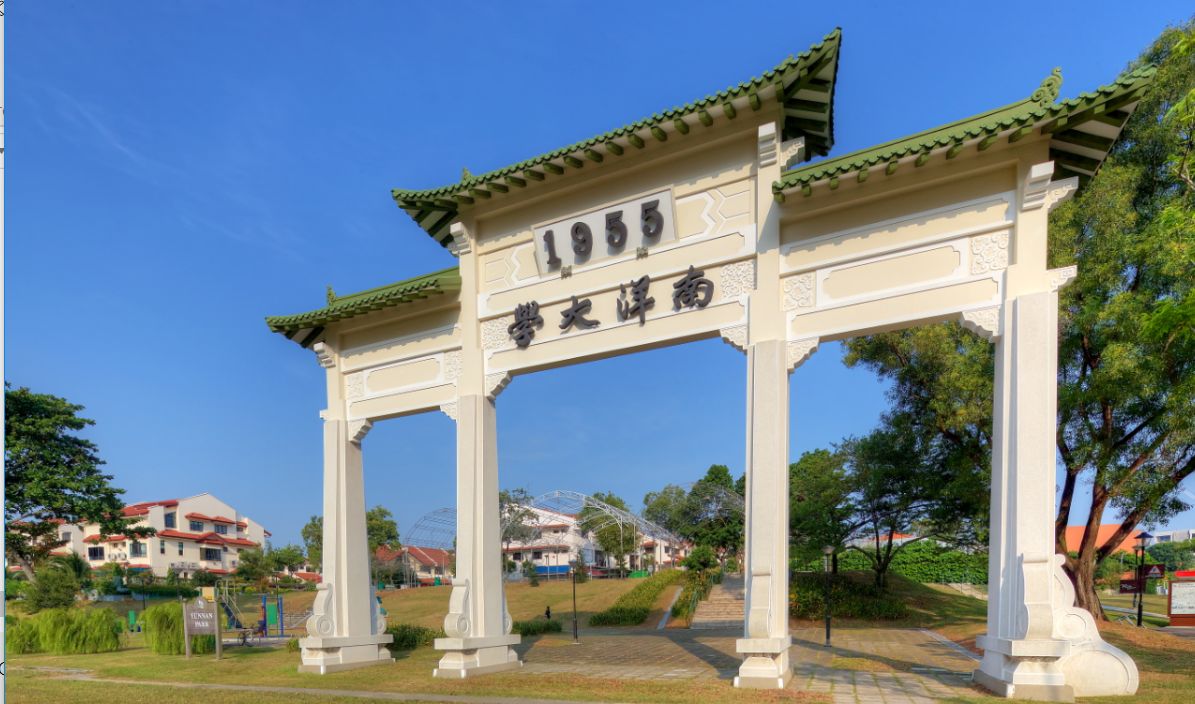
Former Nanyang University Library and Administration Building, Memorial and Arch
Nanyang University (南洋大学), affectionately known as Nantah (南大), was the first Chinese-language university in Southeast Asia and the second university in Singapore. Not only do the Former Nanyang University Library and Administration Building, Memorial, and Arch serve as remembrances of the original Nantah, they also bear witness to the relentless efforts and contributions of the local Chinese community towards making tertiary education accessible to Chinese-speaking youth.
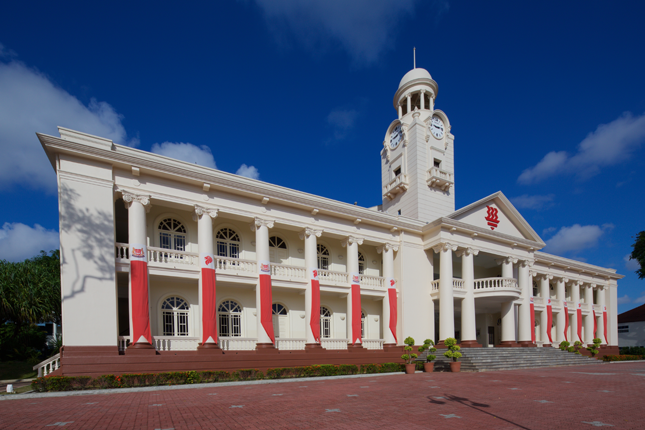
Chinese High School Clock Tower Building
The Chinese High School Clock Tower Building is the icon of the oldest Chinese-medium high school in Singapore and has been a visual landmark of Bukit Timah Road since its completion. It serves as a reminder of the local Chinese community’s commitment to quality education.
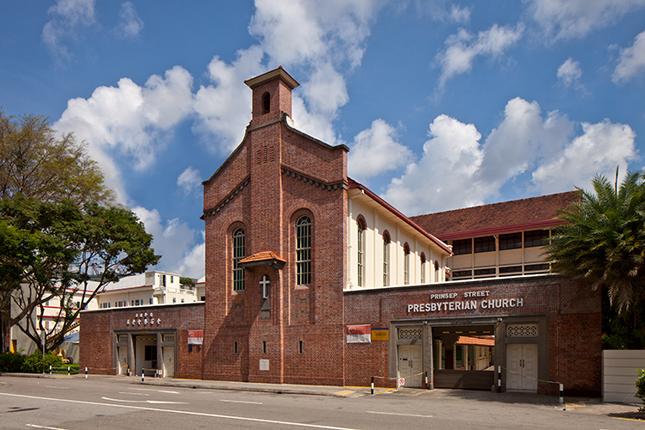
Prinsep Street Presbyterian Church
Prinsep Street Presbyterian Church is one of Singapore’s oldest Presbyterian churches. Its unique façade stands out from the modern buildings surrounding it, serving as a reminder of the contributions of early Protestant missionaries in colonial Singapore, as well as the spread of Protestantism in the region. The church is also the birthplace of The Boys’ Brigade Movement in Singapore.
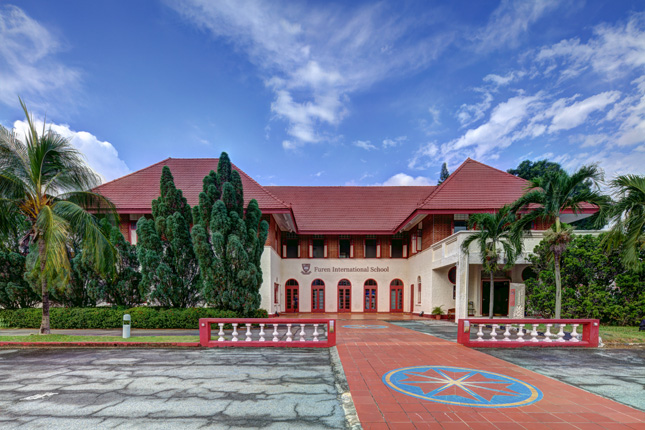
Former Admiralty House
The Former Admiralty House used to accommodate key military commanders based in Singapore. It bears testimony to the former Singapore Naval Base located in the vicinity and also embodies Singapore’s military history.
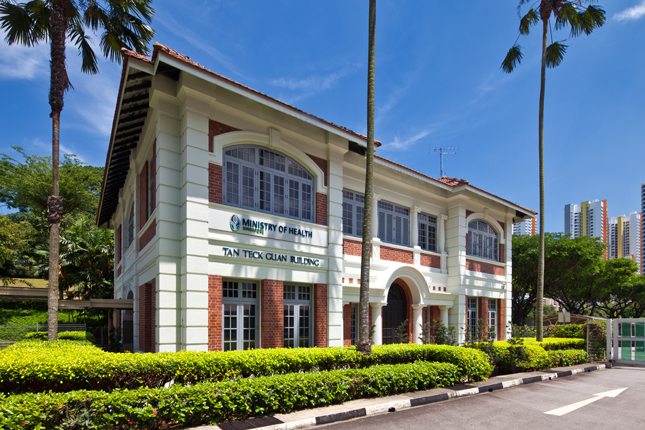
Tan Teck Guan Building
Tan Teck Guan Building testifies to the contributions of pioneers to medical education in Singapore, which in turn advanced the local medical service and encouraged the development of local tertiary education.
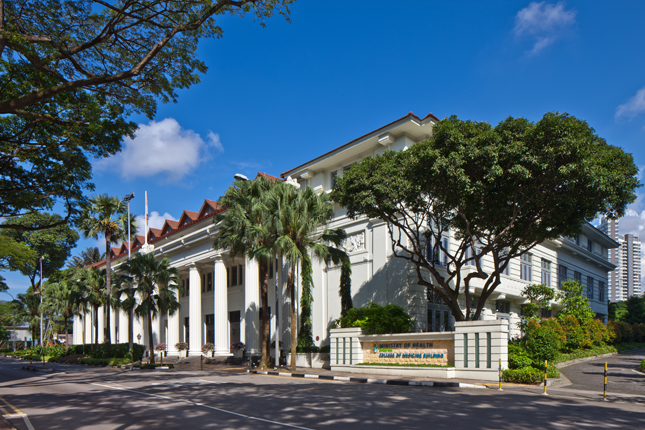
College of Medicine Building
As Singapore’s first purpose-built medical college, the College of Medicine Building bears witness to the development of local medical services, as well as the progress in Singapore’s tertiary education.
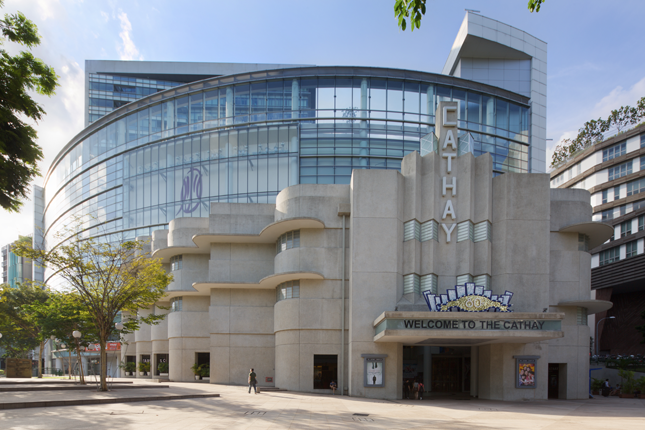
Former Cathay Building (now The Cathay)
The Art Deco façade wall fronting the modern glass architecture of The Cathay is the remnant of what used to be Malaya’s tallest building. Previously known as Cathay Building, it was the first skyscraper and the first air-conditioned cinema in Singapore. While the Former Cathay Building was built as a venue for entertainment, it served a much more sombre purpose during the war years.
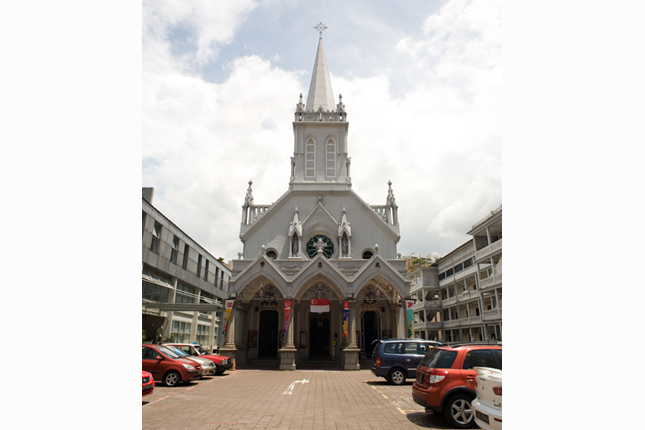
Church of Saints Peter and Paul
The Church of Saints Peter and Paul is one of the oldest Catholic churches in Singapore that catered to a predominantly Chinese congregation. Built more than a century ago, it stands today as a testimony to the spread of the Catholic faith and also to the contributions of Catholic missionaries to education in Singapore.
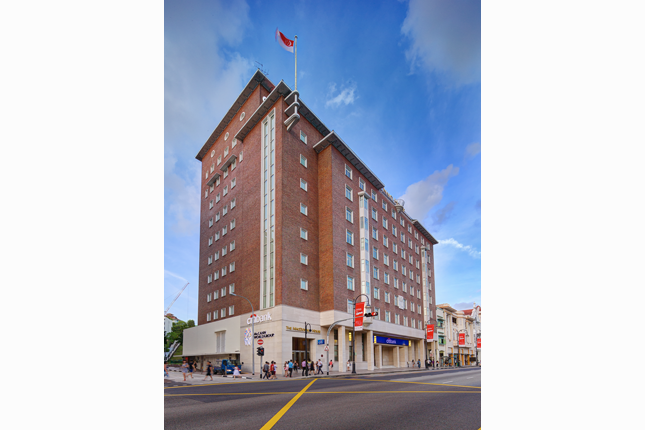
MacDonald House
MacDonald House is perhaps most remembered as the target of a tragic bombing during the Indonesian-Malaysian Konfrontasi (Confrontation).
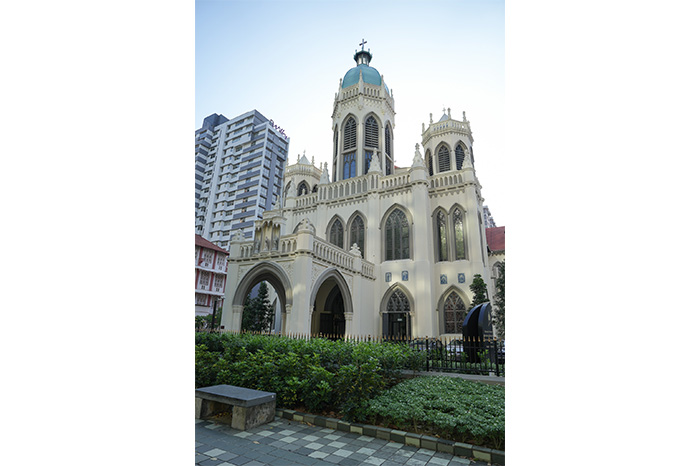
St Joseph's Church
Saint Joseph’s Church was the headquarters of the Portuguese Mission in Singapore. The church was situated in what used to be the European town in colonial Singapore. The church edifice is not only a monument to the contributions of the Portuguese and Portuguese Eurasian communities, but also to the Catholic missionaries’ commitment to provide education for children.
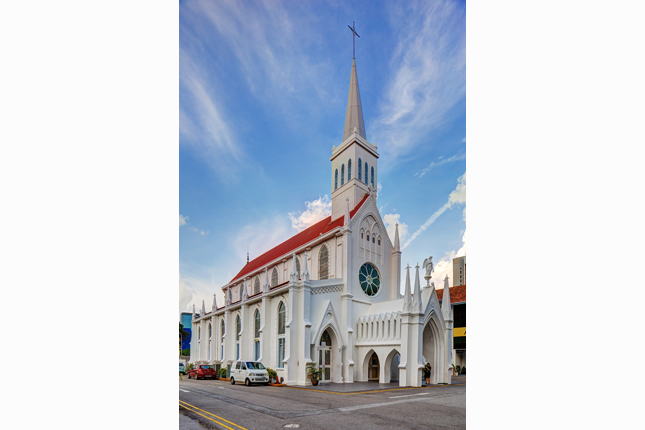
Church of Our Lady of Lourdes
Known simply as the Indian Church or Tamil Church in the past, the Church of Our Lady of Lourdes is one of Singapore’s oldest Catholic churches. It bears testimony to the spread of Catholicism in Singapore, especially to the growth of the Tamil Catholic community over the years.
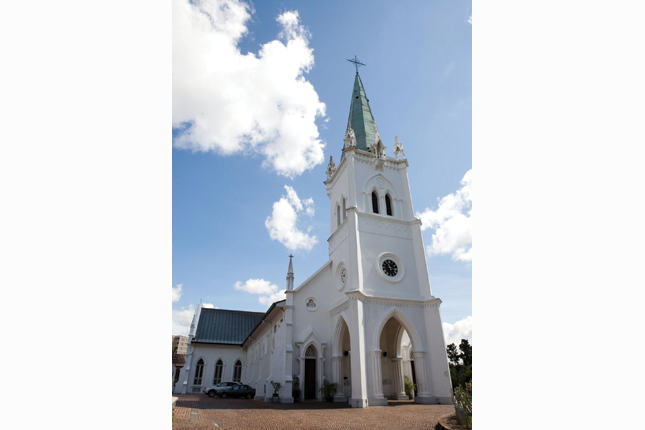
Church of the Nativity of the Blessed Virgin Mary
The Church of the Nativity of the Blessed Virgin Mary is one of the earliest Catholic churches built in the suburbs of Singapore. Over the years, the church has faithfully served the spiritual needs of the predominantly Teochew-speaking Catholics living in Hougang, which at a point in time outnumbered the non-Catholic community. It now stands as a living testament not only to the spread of Catholicism, but also to the many contributions of Catholic missionaries in nineteenth-century Singapore.
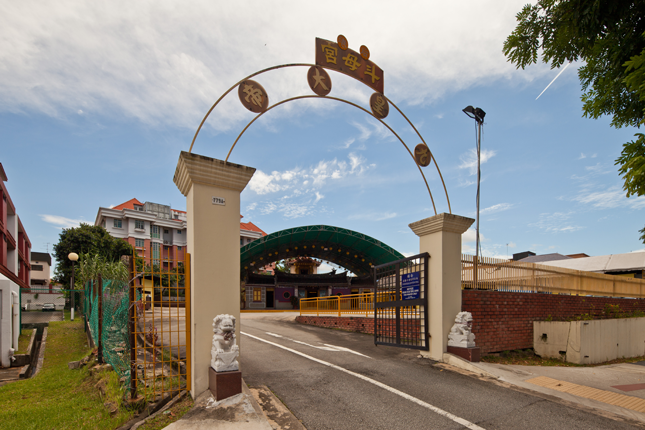
Tou Mu Kung
Tou Mu Kung (斗母宫) is the oldest temple in Singapore dedicated to the Taoist deity Jiu Huang Ye (九皇爷, ‘Nine Emperors’ or ‘Ninth Emperor’). Besides serving the spiritual needs of both the Hokkien and Teochew communities in its vicinity, the temple also attracts huge crowds of devotees from all around the island, particularly during the grand festivities held in honour of Jiu Huang Ye during the ninth month of the lunar calendar.
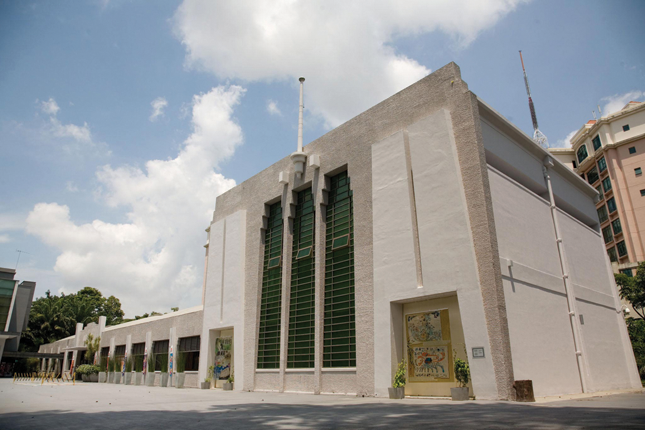
Former Ford Factory
As Ford Motor Company’s first automobile assembly plant in Southeast Asia, this building bore witness to the booming manufacturing industry in Singapore in the twentieth century. The building is also remembered as the location where the British unconditionally surrendered Singapore to the Japanese in 1942.
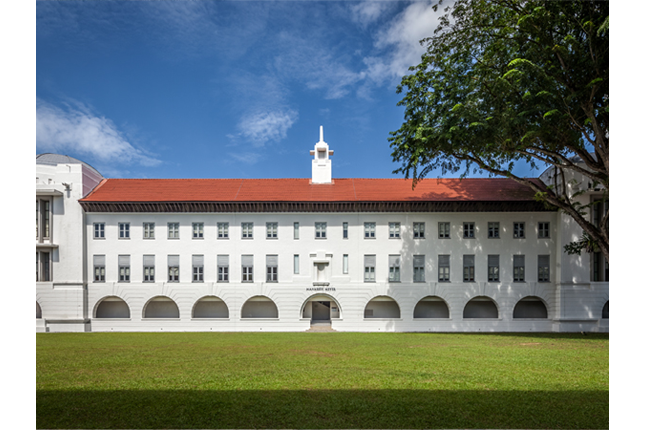
Former Raffles College (now NUS Campus at Bukit Timah)
As the first college for the arts and sciences in British Malaya, the campus bears testimony to the commitment of the British Administration and philanthropists to provide quality tertiary education for the locals.

Church of St Teresa
Originally constructed for the spiritual needs of the Hokkien-speaking Catholics living in the town area, this magnificent edifice testifies to the religious and architectural contributions of Catholic missionaries, and also the growth of the local Chinese Catholic community in the early twentieth century.

Former Keng Teck Whay Building
The Former Keng Teck Whay Building building stands as a witness to the presence and contributions of the Hokkien Peranakans (Straits Chinese) in colonial Singapore and to the community spirit of mutual aid among the pioneers.

Former Command House
The stately Former Command House's role in Singapore’s military history was of paramount importance, especially at the dawn of the Second World War in Asia in the late 1930s and early 1940s.

Former St James Power Station
The Former Saint James Power Station was the first coal-fired power station on the island. While the building no longer produces electricity, it remains a standing monument to Singapore’s modernisation and urban development during the colonial era.
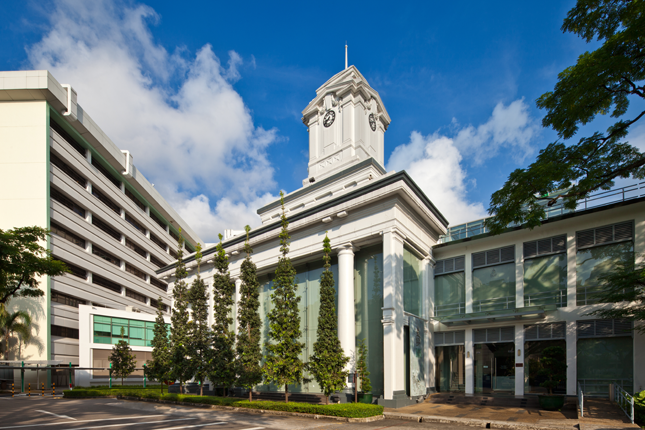
Bowyer Block
Bowyer Block is a standing reminder of the marked improvements in medical facilities during the 1920s. It is also a memorial to those who had given their lives to public healthcare services in Singapore, and in particular, Dr John H. Bowyer.
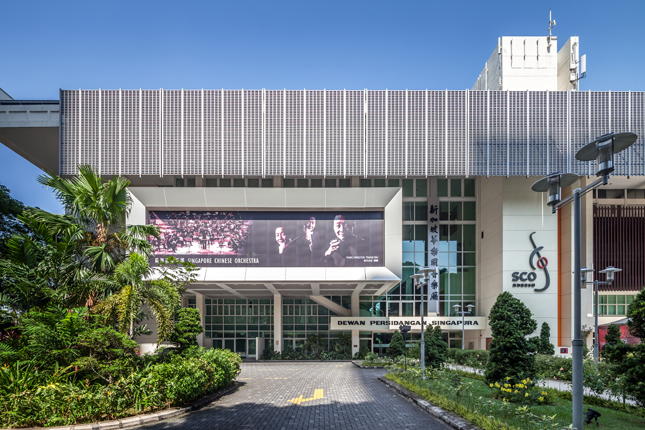
Former Singapore Conference Hall and Trade Union House (now Singapore Conference Hall)
The Former Singapore Conference Hall and Trade Union House was constructed to house the headquarters of the National Trades Union Congress (NTUC) as the fulfilment of an election promise, as well as to host various exhibitions and conferences.
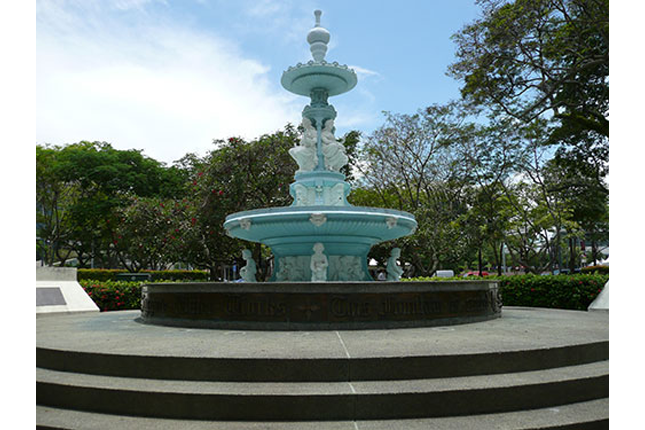
Esplanade Park Memorials
At Esplanade Park are Tan Kim Seng Fountain, the Cenotaph, and Lim Bo Seng Memorial. These three memorials were gazetted collectively as a National Monument.

Former Tanjong Pagar Railway Station
The Former Tanjong Pagar Railway Station was previously the southernmost terminal station of the Federated Malay States Railways. While the stately building no longer serves its original function, it continues to bear testimony to the rapid development of trade, industry, and transport in the colonial period, as well as to Singapore’s historical ties with Malaysia.
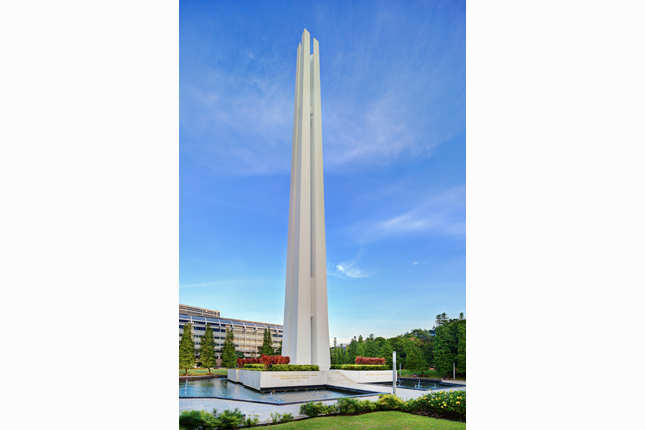
Civilian War Memorial
This is the first memorial in Singapore dedicated to the civilian victims of the Japanese Occupation (1942–1945). It calls to mind the shared sufferings of the various ethnic communities in Singapore, and the ardent hope that locals had after the war to rebuild their homes.
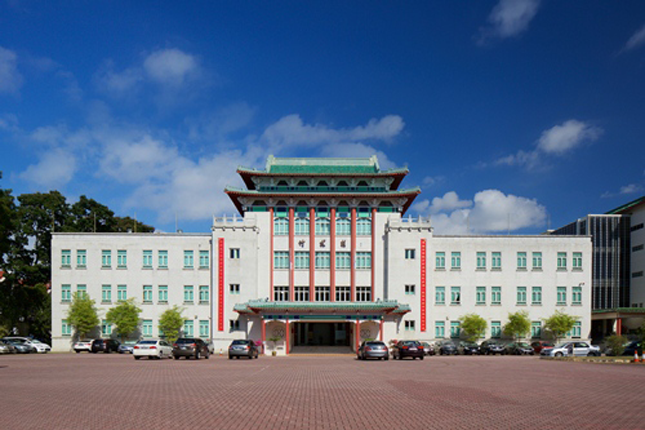
Chung Cheng High School (Main) Administration Building and Entrance Arch
One of Singapore’s oldest Chinese high schools, Chung Cheng High School was among the firsts to make higher education accessible to Chinese youth. The Administration Building and Entrance Arch bear testimony to the Chinese community’s commitment to quality education throughout the years.
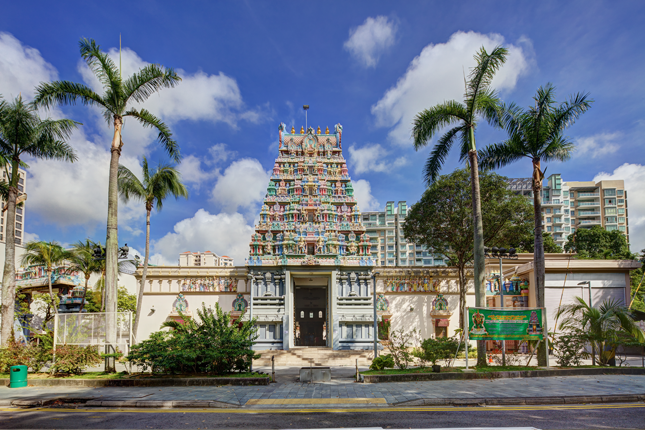
Sri Thendayuthapani Temple
Sri Thendayuthapani Temple, commonly referred to as the Chettiars’ Temple, is one of Singapore’s oldest Hindu temples dedicated to Murugan, the Hindu deity who is also known as Sri Thendayuthapani. It stands as a living testimony to the Chettiars’ contributions to Singapore’s colonial economy.
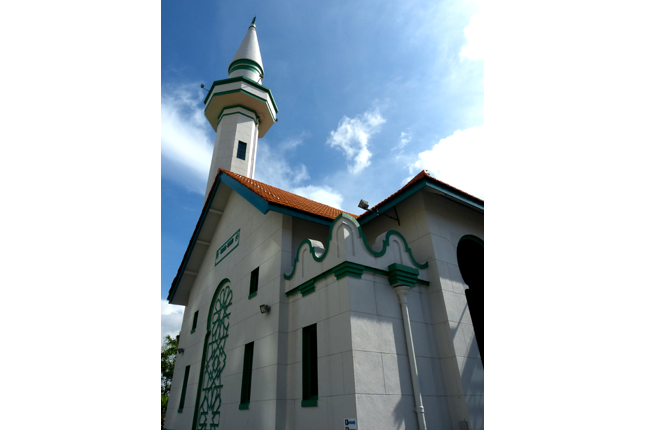
Alkaff Upper Serangoon Mosque
Alkaff Upper Serangoon Mosque was constructed by the mercantile and landowning Alkaff family to serve the spiritual needs of the local Muslim community at large. It stands as a reminder of the Arabs' philanthropic deeds and their contributions to colonial Singapore.

Jurong Town Hall
On a hill overlooking Jurong estate, Jurong Town Hall once served as the headquarters of Jurong Town Corporation. It is emblematic of Jurong Town’s rapid growth during Singapore’s industrialisation in the post-independence years.
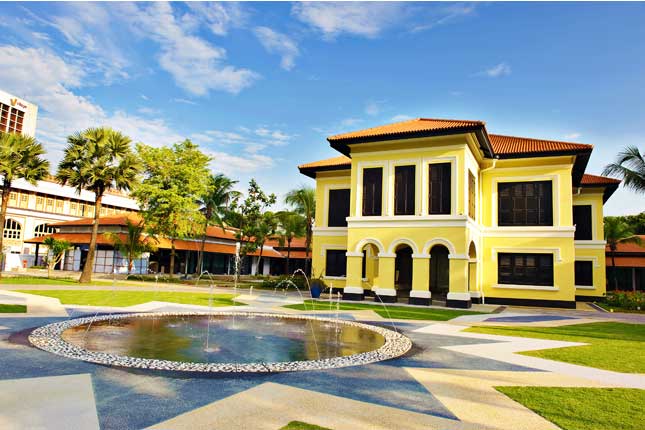
Istana Kampong Gelam
Within the historic district of Kampong Gelam lies Istana Kampong Gelam (‘Gelam Village Palace’). Once the palace of the Malay royalty and the seat of sultanate in Singapore, the Istana bears testimony to Singapore’s historical links to the Malay world.
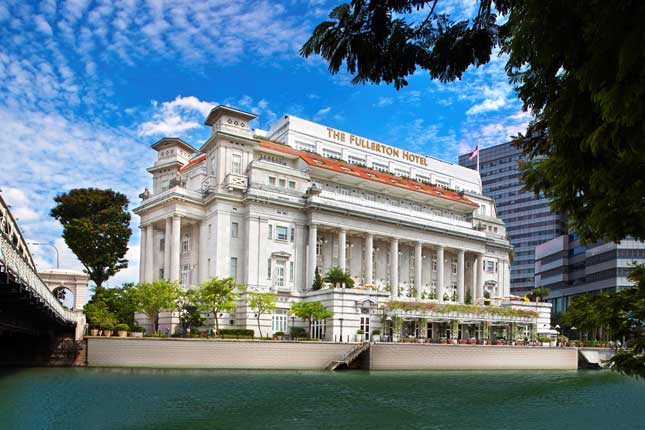
Former Fullerton Building
The former Fullerton Building is a prominent landmark situated at the mouth of the Singapore River. Most well remembered as the General Post Office (GPO) and having housed several government departments, this building has been a witness to many of Singapore’s milestones.
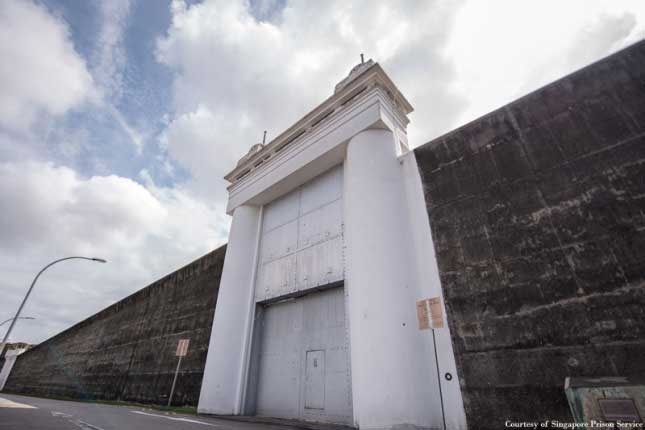
Changi Prison Gate Wall and Turrets
Changi Prison was designed to be a maximum security prison to house up to 600 criminals sentenced to long-term imprisonment in British Singapore. The remaining structures of the original prison – the entrance gate, wall and turrets – stand as an enduring symbol of the suffering of those who defended Singapore and the tumultuous years of the Japanese Occupation (1942-1945).
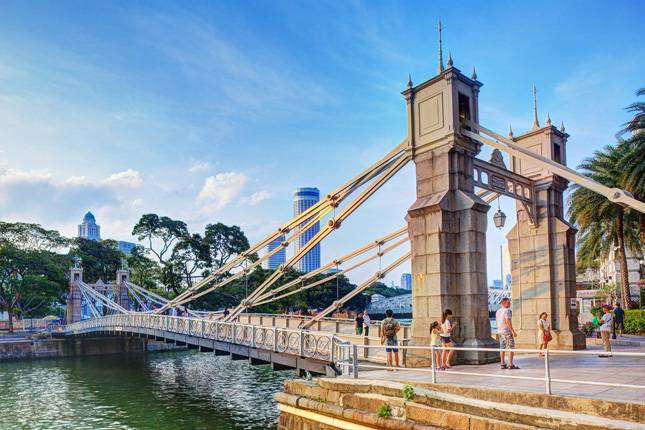
Singapore River Bridges: Cavenagh Bridge, Anderson Bridge and Elgin Bridge
Cavenagh, Anderson and Elgin Bridges are the three most historic and architecturally impressive bridges that span the Singapore River. Collectively, they illustrate Singapore’s growth as a trading port and flourishing city. Located at the historic mouth of the Singapore River, the bridges symbolically connected Singapore with the world as they facilitated the trade and transport links necessary for the growth of the city.
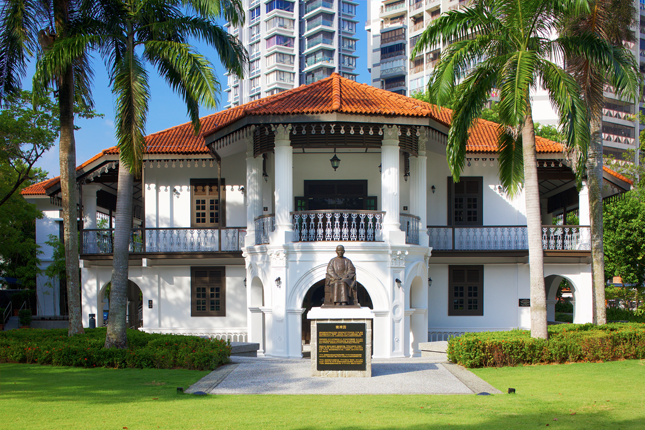
Former Sun Yat Sen Villa (now Sun Yat Sen Nanyang Memorial Hall)
Sun Yat-sen Nanyang Memorial Hall is one of the few surviving examples of villas that were once common sights in British Singapore. It serves as a reminder of the contributions of Chinese pioneers and their historic connection to the 1911 Chinese Revolution.



